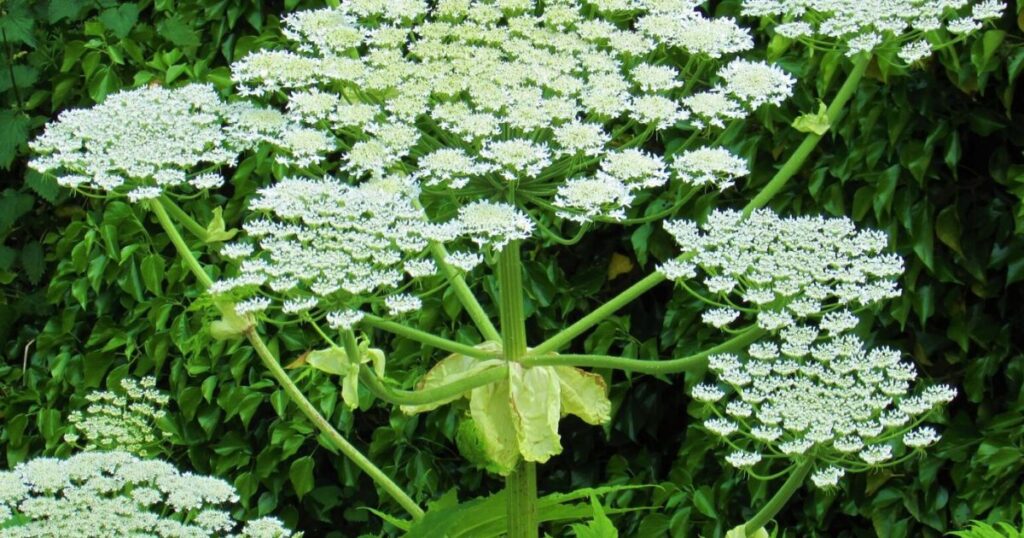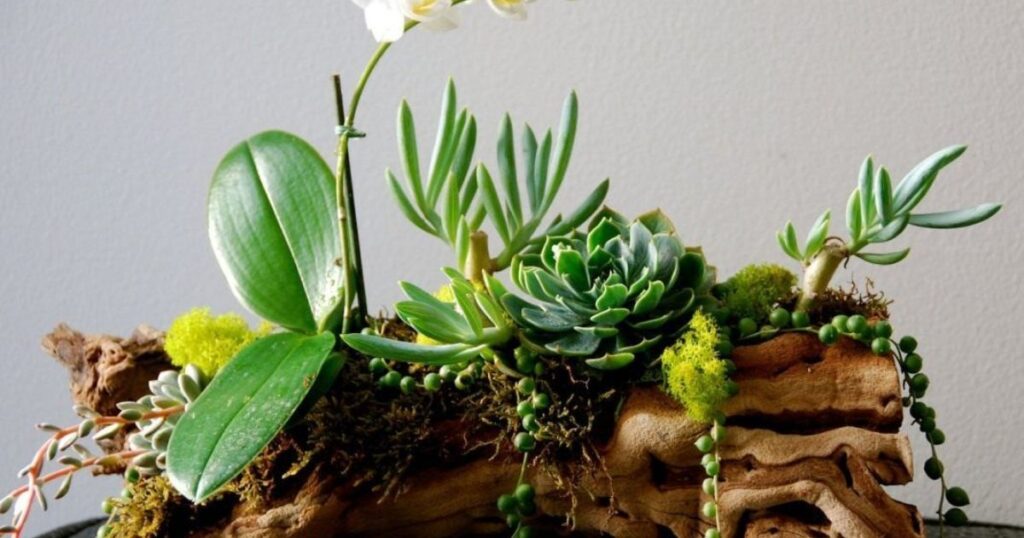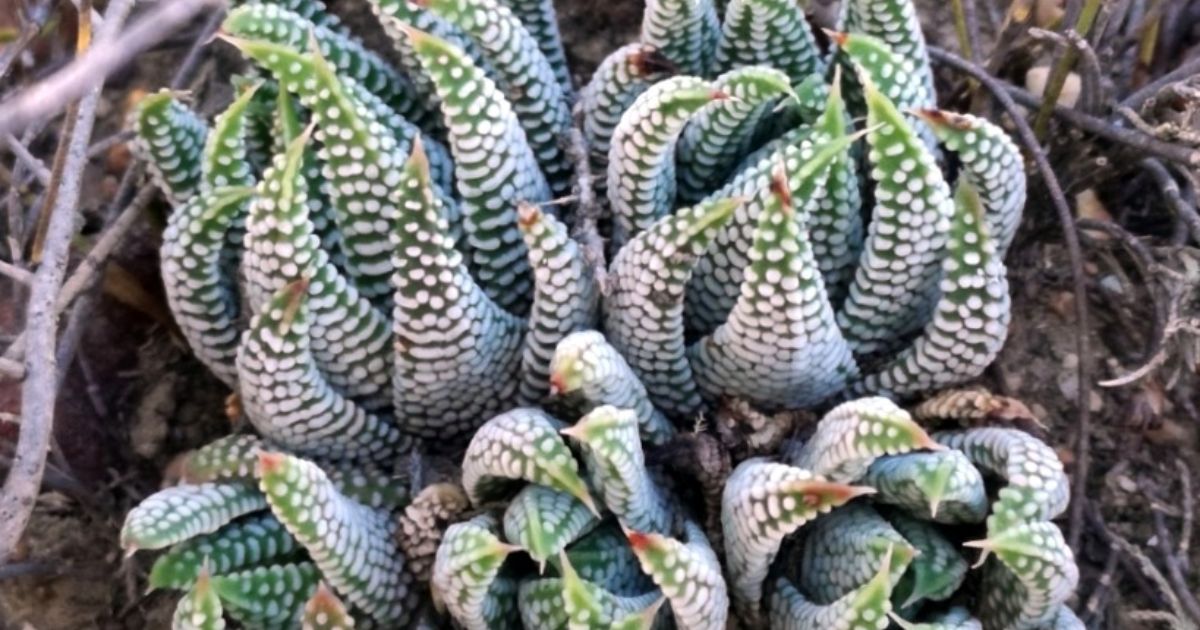Succulents are safe for bearded dragons when they refer to a specific selection of plants that pose no harm to these reptiles. Bearded dragons, popular as pets, have specific dietary needs and restrictions, and it’s crucial for their well-being that they are not exposed to toxic substances.
What Succulents Are Safe For Bearded Dragons is a common question among pet owners seeking to enhance their bearded dragon’s habitat. The safety and well-being of these reptiles are of utmost importance, making the choice of succulents a critical consideration. Whether you are a seasoned reptile enthusiast or a new bearded dragon owner.
Succulents play a significant role in providing both aesthetic appeal and practical benefits in a bearded dragon’s habitat. Not only do they add a touch of greenery to the enclosure, but many succulents also offer a source of hydration for bearded dragons. Some safe succulents for bearded dragons include Sempervivum, Sedum, and Opuntia.
Potentially Poisonous Plants for Bearded Dragons

Bearded dragons are fascinating reptilian pets known for their docile nature and unique dietary needs. While they primarily thrive on a diet of insects and vegetables, it’s crucial for their well-being that their environment is free from potentially poisonous plants.
Some common plants, such as ivy, oleander, and certain types of ferns, can be harmful or toxic to bearded dragons if ingested. It’s essential for reptile enthusiasts to thoroughly research and identify plants within the dragon’s habitat to ensure a safe and enriching environment for these beloved pets.
Installing Plants in Your Bearded Dragon’s Tank
When it comes to installing plants in your bearded dragon’s tank, it’s essential to choose species that are safe for reptiles and suitable for a desert habitat. Opt for artificial plants or live succulents that mimic the arid environment typical of a bearded dragon’s natural habitat. Consider factors such as temperature, as some succulents may not thrive if the conditions are too cold. It’s crucial to strike a balance and create an environment that not only resembles the desert but also meets the specific needs of the plants and your bearded dragon. Always be mindful of what is too cold for succulents, as maintaining the right temperature is key to a successful and healthy habitat.
These plants not only provide aesthetic appeal to the tank but also serve as hiding spots and climbing structures, promoting physical activity and mental stimulation for your pet. Remember to securely anchor any decorations to avoid accidental tipping, and ensure the plants are non-toxic to ensure the health and well-being of your beloved bearded dragon.
Is Echeveria Safe for Bearded Dragons?
Bearded dragons thrive on a diet that primarily consists of insects and vegetables. While Echeveria is a type of succulent plant commonly found in gardens and households, it is not an ideal choice for the diet of bearded dragons. Bearded dragons are herbivores, and their digestive systems are not equipped to process succulent plants like Echeveria.
In fact, many succulents, including Echeveria, can be harmful to them due to their chemical composition, which may cause digestive issues or toxicity. It is crucial for bearded dragon owners to provide a diet rich in leafy greens, vegetables, and appropriate insects to ensure the health and well-being of their reptilian companions.
| Succulents Safe for Bearded Dragons | Key Points |
| Aloe Vera | Provides hydration for dragons |
| Sedum (Stonecrop) | Low oxalates, safe for consumption |
| Echeveria | Non-toxic and visually appealing |
| Hibiscus | Edible flowers add variety |
| Prickly Pear Cactus | Offers hydration and nutrition |
| Dragon Fruit Cactus | Safe and enticing for bearded dragons |
| Avoid toxic plants | Check safety before introducing new plants |
Proper Plant Choices for Bearded Dragon Habitats
Selecting the right plants for a bearded dragon habitat is crucial to ensure a healthy and stimulating environment for these reptiles. Bearded dragons, originating from the arid regions of Australia, thrive in environments that replicate their natural habitat. Opt for plants that are safe for them to interact with and offer spaces for climbing and basking.
In addition to aesthetics, consider the maintenance and growth habits of the chosen plants. Opt for varieties that are hardy and can withstand the conditions of a bearded dragon enclosure. Plants like spider plants, snake plants, and pothos are known for their durability and can thrive in the warmth and light of a reptile habitat.
Creating a Suitable Environment for Your Bearded Dragon
Creating a suitable environment for your bearded dragon is essential for its well-being and overall health. These reptiles thrive in environments that mimic their natural habitat, which includes a combination of warmth, light, and appropriate furnishings.
A well-designed enclosure should also include a variety of substrates for burrowing, hiding spots, and climbing structures to encourage physical activity. Regular cleaning and maintenance are crucial to prevent the buildup of bacteria and maintain a hygienic space.
How To Use Live Plants In Your Bearded Dragon’s Home
Creating a comfortable and natural environment for your bearded dragon involves incorporating live plants into its habitat. Begin by selecting non-toxic plants such as spider plants, pothos, or succulents, which not only add aesthetic appeal but also provide hiding spots and climbing opportunities for your reptile.
To maintain a healthy and thriving plant setup, choose a substrate that promotes proper drainage and avoids waterlogging. Regularly monitor the plants for signs of stress, such as wilting or discoloration, and adjust lighting and watering accordingly.
Succulents Safe for Bearded Dragon Habitat

Succulents can make a safe and attractive addition to a bearded dragon habitat. Opt for varieties like Aloe Vera or Sedum, which are non-toxic and easy to care for. These plants not only add a touch of greenery but also provide a natural environment for your bearded dragon to explore.
Best Fake Plants for a Bearded Dragon’s Habitat
When selecting fake plants for your bearded dragon’s habitat, it’s essential to choose options that mimic the natural environment while ensuring they are safe for your pet. Opt for plants made from non-toxic materials to prevent any harm to your bearded dragon. Look for vibrant and realistic designs to create a visually appealing habitat that also provides enrichment for your reptile.
Additionally, consider the size and shape of the fake plants to ensure they fit well within the enclosure. A good mix of different plant types can offer hiding spots and climbing opportunities for your bearded dragon, contributing to a more engaging and comfortable living space.
Bearded Dragon Plant
The Bearded Dragon Plant, also known as the Pogona-friendly vegetation, is a special type of plant tailored to the habitat of bearded dragons. These plants are carefully selected to provide a comfortable and enriching environment for these reptiles. With a variety of textures and hiding spots
These plants mimic the natural habitat of bearded dragons, offering them spaces to bask, climb, and explore. They are easy to maintain, requiring minimal care, making them an excellent choice for both novice and experienced reptile enthusiasts.
What Flowers Can Bearded Dragons Eat?
Bearded dragons can enjoy a variety of flowers as part of their diet. Safe options include hibiscus, rose petals, nasturtiums, and dandelions. These colorful blooms not only add visual appeal to their meals but also provide essential nutrients.
It’s crucial to ensure the flowers are pesticide-free and thoroughly washed before offering them to your bearded dragon. Offering a mix of flowers in moderation can contribute to a well-rounded and nutritious diet, promoting the health and happiness of your scaly companion.
Can Bearded Dragons Eat Herbs?
Bearded dragons can enjoy a variety of herbs as part of their diet. Fresh herbs like cilantro, parsley, and basil can provide essential vitamins and minerals for their well-being. It’s crucial to ensure that the herbs are free from pesticides and thoroughly washed before offering them to your bearded dragon.
While herbs can be a nutritious addition, moderation is key. Too much of certain herbs, such as mint or dill, might cause digestive issues for your bearded dragon. It’s always wise to introduce new herbs gradually and observe your pet’s response to maintain a balanced and healthy diet.
Can Bearded Dragons Eat Succulents?
Bearded dragons should not eat succulents as part of their regular diet. While these plants may seem enticing due to their vibrant appearance, many succulents contain compounds that can be harmful to these reptiles. Ingesting certain succulents may lead to digestive issues or even toxicity, potentially endangering the health of your bearded dragon.
It’s crucial to prioritize a diet that consists of safe and nutritious foods tailored to meet the specific dietary needs of bearded dragons. Opt for a well-balanced mix of insects, leafy greens, and other vegetables to ensure your pet receives the essential nutrients required for its overall well-being.
Can Bearded Dragons Eat Basil?
Bearded dragons can eat basil in moderation as an occasional treat. Basil is safe for them and can add variety to their diet. However, it should not be a staple food, as bearded dragons primarily need a diet of insects and leafy greens.
When offering basil to your bearded dragon, make sure it’s fresh and thoroughly washed to remove any pesticides. Chop it into small, manageable pieces to prevent choking. Remember to provide a well-balanced diet to keep your bearded dragon healthy and happy.
Can Bearded Dragons Eat Mint?
Bearded dragons can eat mint in moderation as an occasional treat. Mint provides a refreshing flavor and can be offered as part of their varied diet. However, it’s crucial to avoid excessive amounts, as too much mint might lead to digestive issues for these reptiles.
When offering mint to your bearded dragon, ensure it’s free from pesticides or other harmful chemicals. Wash the mint thoroughly and offer it in small, bite-sized pieces. Monitoring their response to mint and incorporating it sparingly into their diet can add a touch of diversity to their meals while keeping them healthy and happy.
Wrapping Up Safe Plants for Bearded Dragons
In ensuring the well-being of your bearded dragon, it’s crucial to wrap up your search for safe plants. Opt for non-toxic varieties like spider plants, hibiscus, and dandelions, providing a natural and enriching environment. These choices not only enhance the habitat but also contribute to the overall health and happiness of your scaly friend.
As you conclude your quest for safe plants, remember to eliminate any potential hazards. Double-check the identification of plants, removing any doubt about toxicity. By doing so, you create a secure and flourishing space for your bearded dragon, where they can thrive and enjoy a safe haven in their enclosure.
Are Plants Safe in My Bearded Dragon’s Tank?
In a bearded dragon’s tank, it’s important to ensure that the plants you choose are safe for your scaly friend. Opt for non-toxic plants like spider plants, hibiscus, or pothos, as some plants can be harmful if ingested. Avoid plants with thorns or those treated with pesticides, as they may pose a risk to your bearded dragon’s health.
Additionally, be mindful of the size of the plants, ensuring they don’t obstruct your dragon’s movement or create hiding spots for uneaten food. Regularly inspect and clean the plants to prevent any buildup of bacteria or parasites. By selecting safe and appropriate plants, you can create a comfortable and secure environment for your bearded dragon to thrive in.
Nutritional Requirements of Bearded Dragons
Bearded dragons, like all living creatures, have specific nutritional needs to thrive. In their natural habitat, these reptiles are omnivores, meaning they consume a combination of insects and plant matter. To ensure their well-being in captivity, a balanced diet must be provided, consisting of both protein-rich insects such as crickets and mealworms, as well as a variety of vegetables and fruits.
Calcium and vitamin D3 are crucial for their bone health, and it’s essential to dust their food with a calcium supplement regularly. Additionally, bearded dragons require access to clean water at all times. Monitoring their diet and providing a suitable environment, including proper lighting and temperature, is vital for the overall health and happiness of these fascinating reptiles.
Can Bearded Dragons Eat Succulents?
Bearded dragons can enjoy a variety of vegetables and fruits as part of their diet, but when it comes to succulents, caution is advised. While some succulents may be safe for them to consume, others can be toxic and harmful to their health. It’s crucial for reptile owners to thoroughly research specific succulents before introducing them into the bearded dragon’s menu.
Succulents like hens and chicks, sedums, and echeverias are generally considered safe for bearded dragons. However, it’s essential to avoid toxic varieties such as jade plants and aloe vera. Always consult with a veterinarian or reptile expert to ensure the safety of any succulent choices for your bearded dragon’s diet.
FAQ’s
Can bearded dragons eat all types of succulents?
Bearded dragons can enjoy certain succulents, like hens and chicks and sedums, but it’s crucial to avoid toxic varieties such as jade plants and aloe vera.
How do I know if a succulent is safe for my bearded dragon?
Before introducing a succulent to your bearded dragon’s diet, research its safety, and consult with a veterinarian or reptile expert to ensure it won’t harm your pet.
Are there specific succulents that bearded dragons should avoid?
Yes, bearded dragons should avoid toxic succulents like jade plants and aloe vera, as these can be harmful to their health.
Can bearded dragons eat succulents exclusively?
No, a varied diet is essential for bearded dragons. While some succulents are safe, they should be part of a balanced and diverse meal plan.
What should I do if my bearded dragon accidentally eats a toxic succulent?
If you suspect your bearded dragon has consumed a toxic succulent, seek immediate veterinary assistance to address potential health risks.
Conclusion
In conclusion, keeping your bearded dragon healthy involves making informed choices about their diet. While certain succulents can be a tasty addition, it’s crucial to know which ones are safe and which ones can be harmful. Taking the time to research and consult with experts ensures that your pet enjoys a varied and nutritious diet.
A happy bearded dragon is one that receives proper care, including a diverse range of foods. By avoiding toxic succulents and providing a well-rounded diet, you contribute to the well-being and longevity of your scaly friend. So, keep your dragon’s menu diverse and safe, and you’ll have a contented companion for years to come.










